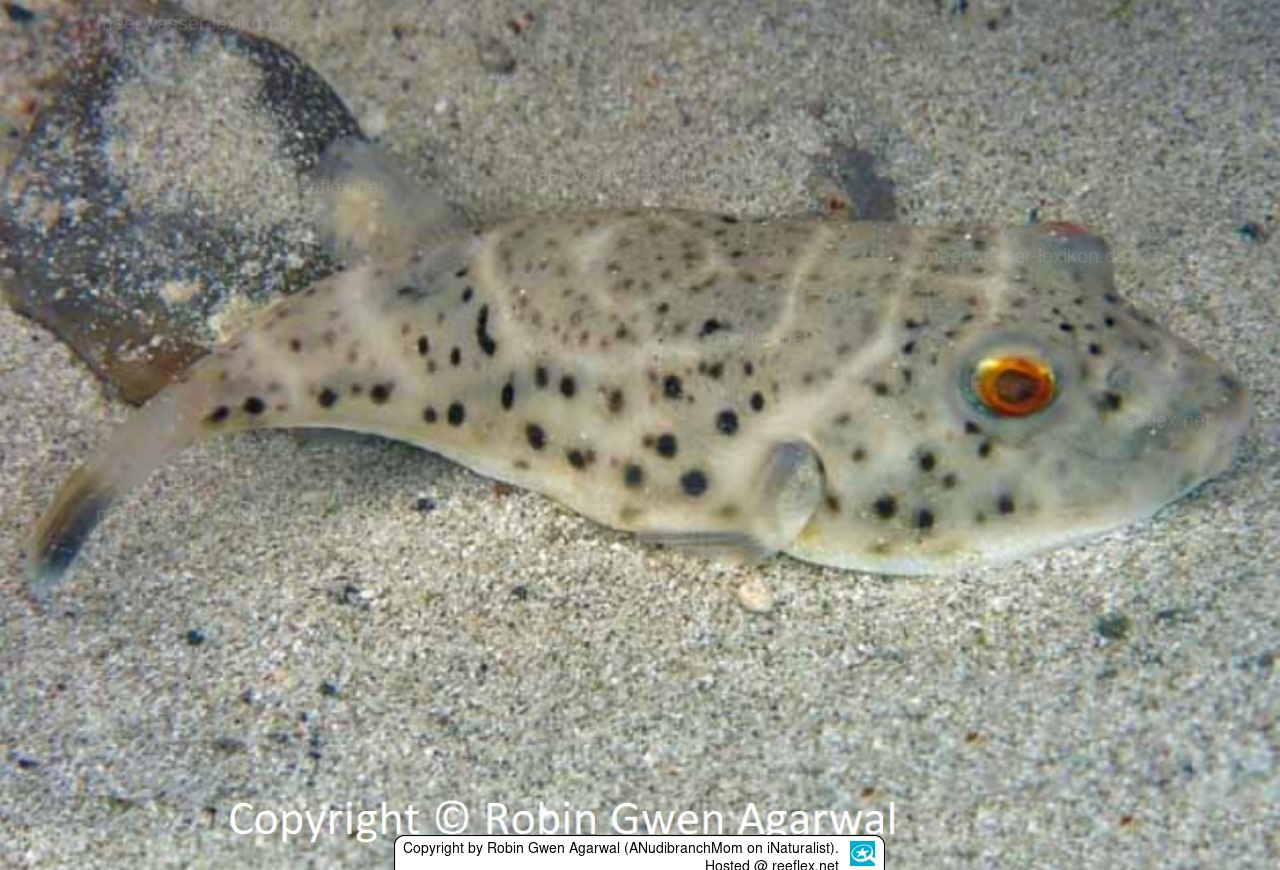Info
Sphoeroides sechurae is an eastern Pacific pufferfish that is found in the Gulf of California and as far south as Peru.
The top half of its body is dark olive brown (greyish brown according to the first description), while the bottom half is much lighter.
There are dark spots above the eyes, which run along the flank behind the pectoral fins.
On the back, there are indistinct pale lines on the upper side: the first line runs between the front edges of the eyes, another between the rear edges of the eyes.
Along the back above the pectoral fins, another line extends obliquely downwards and a short line from the origin of the dorsal fin.
In some specimens, lines are sometimes visible behind the dorsal fin.
In the middle of the back is an indistinct light oval-shaped pattern,
the dorsal fin of Sphoeroides sechurae has a dark base, the inner first third of the caudal fin is olive green, the outer two-thirds are black, the edge of the caudal fin is pale
The anal and pectoral fins are clearly visible and have a narrow dark bar at the base.
The body of Sphoeroides sechurae is elongated and thick, the head is relatively long and slender, but broad and convex between the eyes.
The eyes are set high on the sides of the head.
The pufferfish's jaw is a powerful beak consisting of four fused, heavy, strong teeth with a central suture on each jaw, which the pufferfish uses to crack its hard-shelled prey.
Similar species: Synodus scituliceps Jordan & Gilbert 1882
Etymology: The genus name “sphoeroides” is from Greek, where “sphaira” means ball + “oides” is similar.
Eponym: The species name “sechurae” is a toponym, referring to Sechura Bay, Peru, where the species was first discovered.
Many thanks to Robin Gwen Agarwal for her great photo!
The top half of its body is dark olive brown (greyish brown according to the first description), while the bottom half is much lighter.
There are dark spots above the eyes, which run along the flank behind the pectoral fins.
On the back, there are indistinct pale lines on the upper side: the first line runs between the front edges of the eyes, another between the rear edges of the eyes.
Along the back above the pectoral fins, another line extends obliquely downwards and a short line from the origin of the dorsal fin.
In some specimens, lines are sometimes visible behind the dorsal fin.
In the middle of the back is an indistinct light oval-shaped pattern,
the dorsal fin of Sphoeroides sechurae has a dark base, the inner first third of the caudal fin is olive green, the outer two-thirds are black, the edge of the caudal fin is pale
The anal and pectoral fins are clearly visible and have a narrow dark bar at the base.
The body of Sphoeroides sechurae is elongated and thick, the head is relatively long and slender, but broad and convex between the eyes.
The eyes are set high on the sides of the head.
The pufferfish's jaw is a powerful beak consisting of four fused, heavy, strong teeth with a central suture on each jaw, which the pufferfish uses to crack its hard-shelled prey.
Similar species: Synodus scituliceps Jordan & Gilbert 1882
Etymology: The genus name “sphoeroides” is from Greek, where “sphaira” means ball + “oides” is similar.
Eponym: The species name “sechurae” is a toponym, referring to Sechura Bay, Peru, where the species was first discovered.
Many thanks to Robin Gwen Agarwal for her great photo!







 Robin Gwen Agarwal (ANudibranchMom on iNaturalist)
Robin Gwen Agarwal (ANudibranchMom on iNaturalist)















